
Jihong Bridge spans over the Lancangjiang River at the place where Shuizhai Township of Baoshan City connects with Shanyang Township of Yongping County. It is the first chain bridge constructed in this province.
According to historical accounts, the place where the bridge spanned was called "Lanjin Ferry" in olden times. Emperor Wudi of the Han Dynasty sent an expedition to explore the land inhabited by the Southwestern primitive tribes by way of the Bonan Route and Lanjin Ferry. The Han soldiers mainly followed the route crossing this bridge. Lanjin was originally a ferry for boats and rafts; later a bridge of rattan and bamboo was made and still later replaced by one of wood. The extant chain bridge was constructed in the 11th year of the Chenghua era of the Ming Dynasty (1475) and was named "Jihong Bridge". It is in fact 17 chains fixed on the opposing east and west cliffs, stretching over the river. The bridge surface is a present formed of 15 connected chains, with a span of 60 m. Every chain has 176 links, each 0.33 m. long and 3.9 kg. in weight. The surface is paved with wooden boards for travelers' passage.
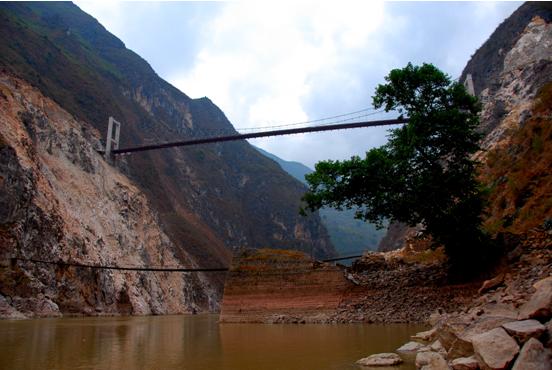
On the east bank (within the precincts of Yongping County) there stands a pavilion for the Imperial Inscription in nobel dimensions, with a golden horizontal board bearing the inscription of Emperor Kangxi of the Qing Dynasty: "A Rainbow Extending to the Other Bank". Beside this structure is the Martial Marquis's Temple (Wuhou Ci), which once enshrined Zhuge Liang's gilded statue. On the west bank (within the precincts of Baoshan City) is Avalokitesvaras Pavilion. These structures are either built over the cliffs or on the steep slopes, presenting a marvelous view. The famous Italian traveler Marco Polo and the Ming Dynasty's traveller Xu Xiake as well as the Ming Dynasty's Emperor Yongli, etc. all visited this bridge. On the stone walls of the west bank not a few carved inscriptions are left by the literati of the successive historical periods, such as "A Marvelous Crossing from Cliff to Cliff, "A Rainbow Flying Over the River", "Key Pass to the Southern World", and "Golden Teeth Screening the Throat", etc.
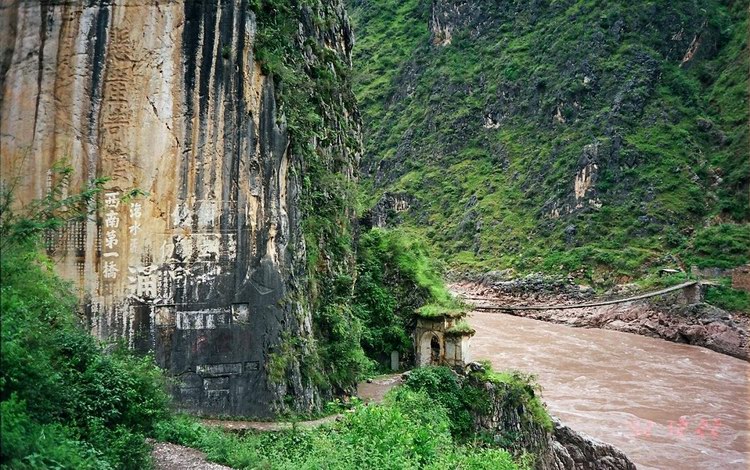
It is already over 500 years since the construction of the bridge, a space of 200 years earlier than the world-famous Luding Chain Bridge over the Daduhe River, which was constructed in the 44th year of the Kangxi era of the Qing Dynasty or 1705. Therefore it is also called the First Bridge in Southwest China, having rather high value for the study of the history of bridge construction in this country. It is one of the provincial cultural relics under enhanced protection.
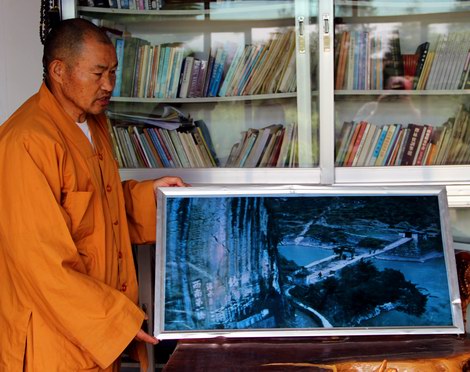 Only pictures still exist of the old Jihong Bridge like this one held at the Jiang-Ding-Si temple.
Only pictures still exist of the old Jihong Bridge like this one held at the Jiang-Ding-Si temple.
The Jihong Bridge was the oldest bridge spanning the Lancangjiang (Mekong). The bridge known formally as the Lanjin Bridge was a vital link in the Southern Silk Road and the only place where the river could be crossed by bridge.
The last Jihong Bridge was washed away by floods in 1986 and the bridge was never rebuild. The bridge heads and the stone carvings on the cliff overlooking it have disappeared under the water of the reservoir now build in this part of the river. Those following the Southern Silk Road till recently had to be ferried across by rowing boat. Now there is a new suspension bridge build to aid the construction work on two bridges one for the new railway to the west of Yunnan province, the other for the crude oil and natural gas pipelines.
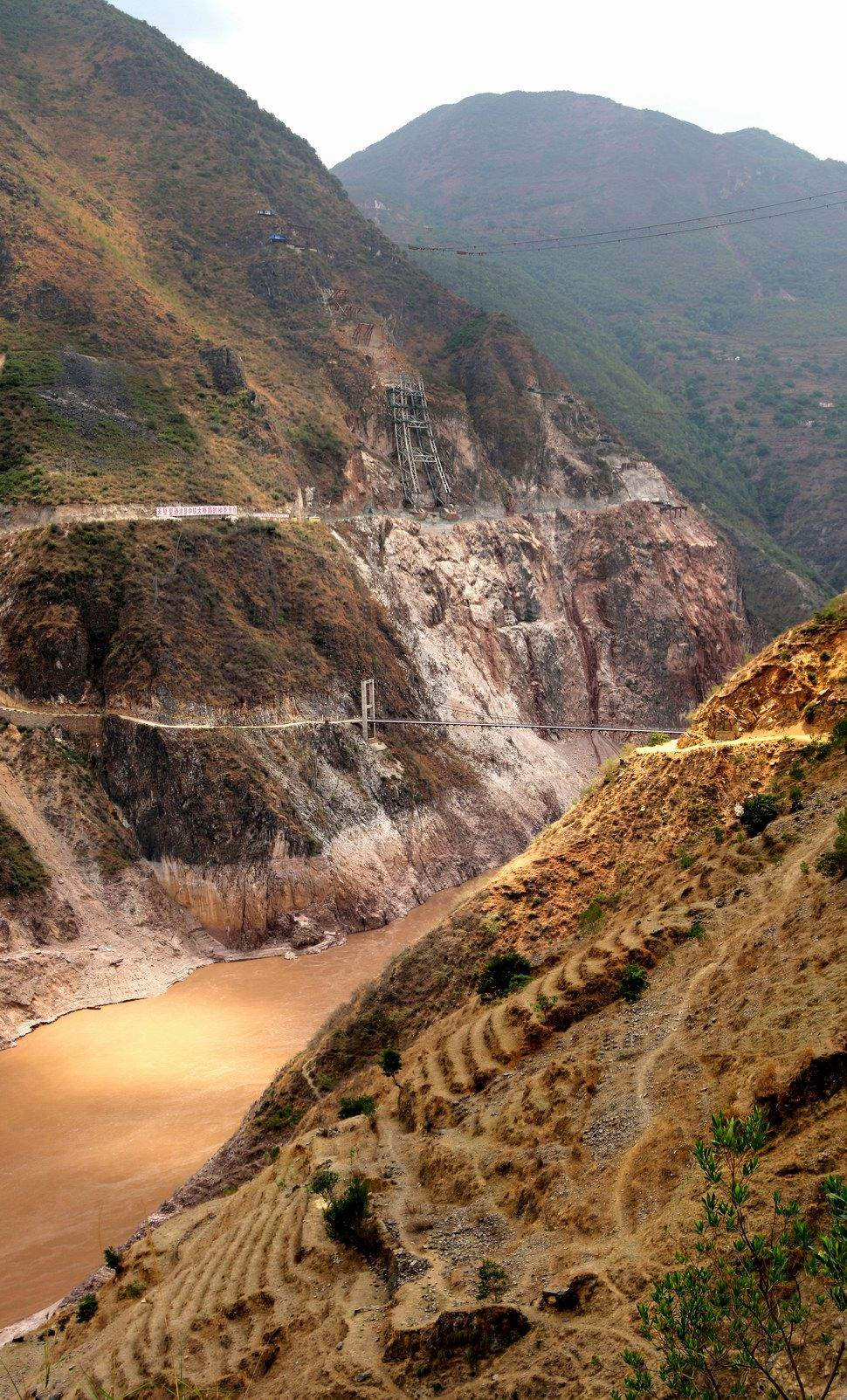 The old Jihong Bridge was located at the bottom of the valley. Recently a new, much bigger, suspension bridge has been constructed to aid the work on the two, even bigger, bridges under construction. One is a gigantic high-speed-rail bridge the other for carrying the crude oil and natural gas pipelines across the river. The bridges connect to the tunnels (at the top of the scaffolding). The picture gives a good idea about the steepness of the cliffs on both sides of the river. In the foreground the old footpath that lead to the now gone iron chain suspensions bridge. (Photo: May 2012).
The old Jihong Bridge was located at the bottom of the valley. Recently a new, much bigger, suspension bridge has been constructed to aid the work on the two, even bigger, bridges under construction. One is a gigantic high-speed-rail bridge the other for carrying the crude oil and natural gas pipelines across the river. The bridges connect to the tunnels (at the top of the scaffolding). The picture gives a good idea about the steepness of the cliffs on both sides of the river. In the foreground the old footpath that lead to the now gone iron chain suspensions bridge. (Photo: May 2012).
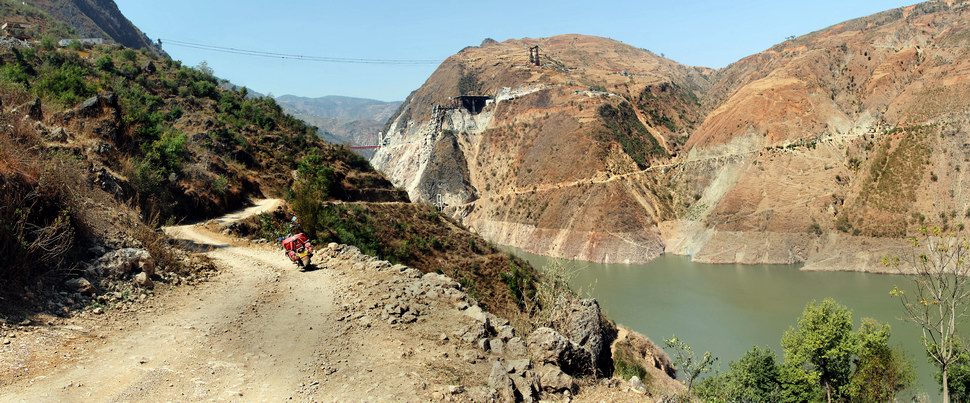 The modern Jihong Bridges. The rail bridge is still under construction but the bridge carrying the crude oil and natural gas pipelines has been finished (The red bridge in the background). The picture gives a good idea about the remoteness of these bridges. (Photo: February 2013).
The modern Jihong Bridges. The rail bridge is still under construction but the bridge carrying the crude oil and natural gas pipelines has been finished (The red bridge in the background). The picture gives a good idea about the remoteness of these bridges. (Photo: February 2013).
Admission Fee:¥0

You will only receive emails that you permitted upon submission and your email address will never be shared with any third parties without your express permission.
